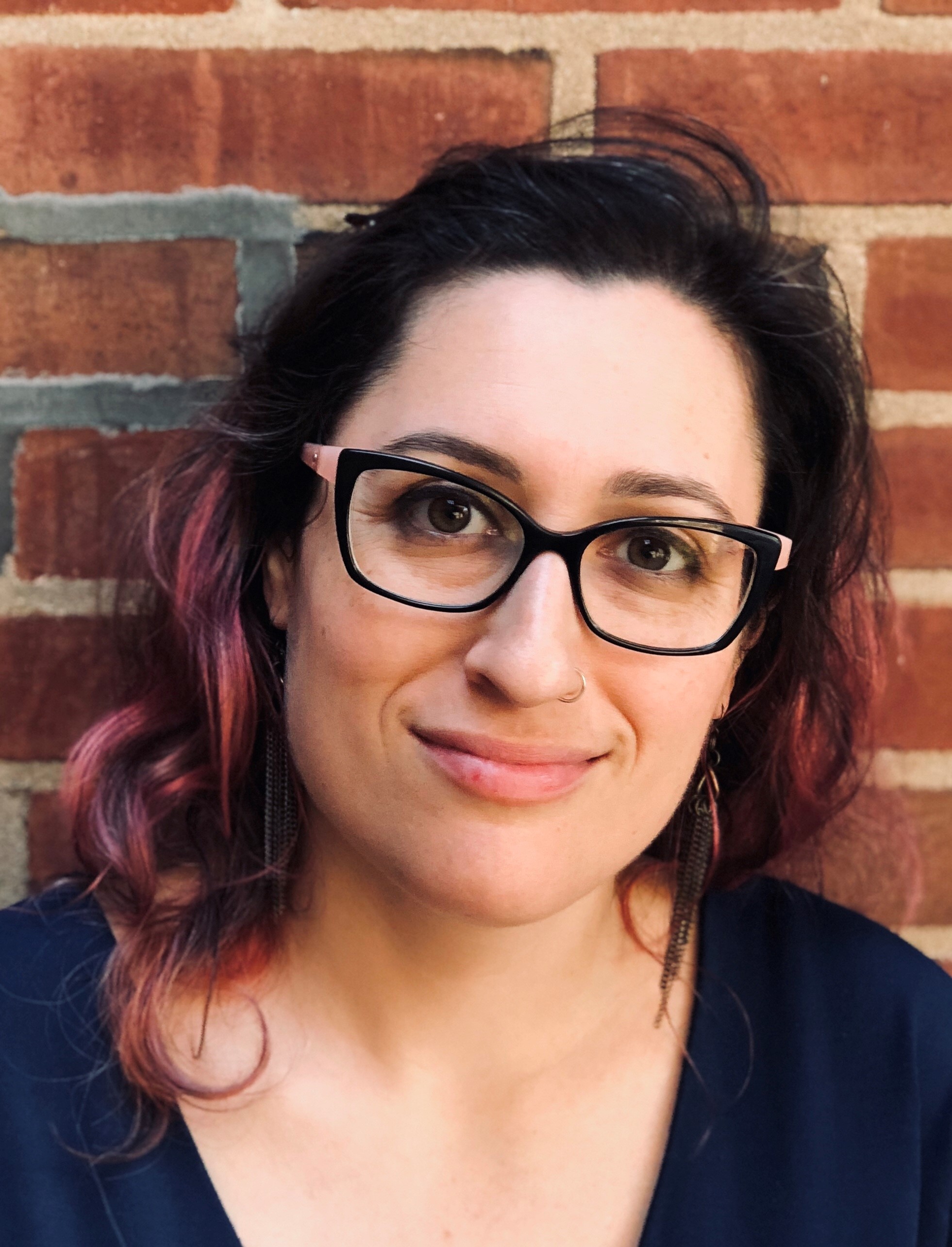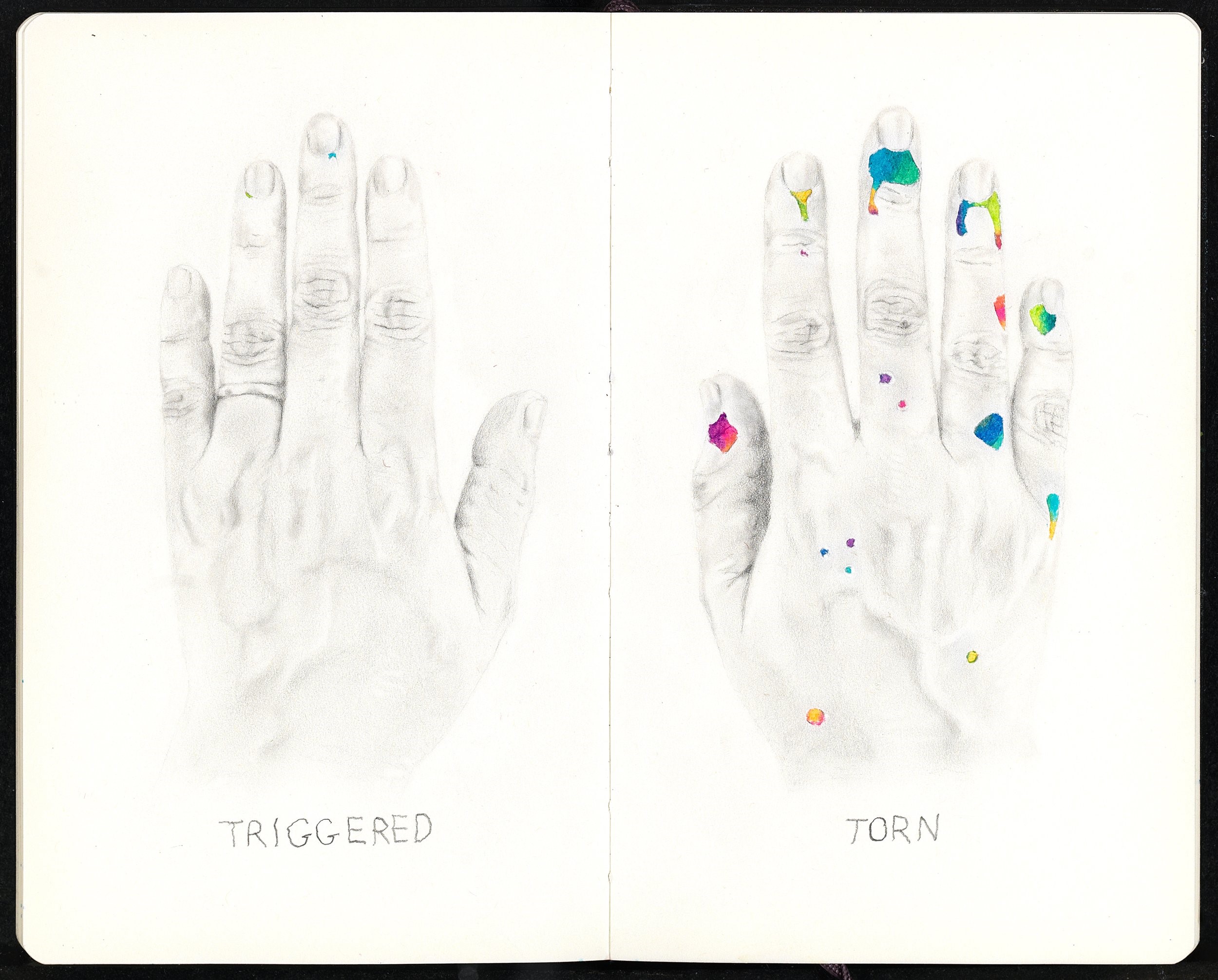September 3, 2019 | By Sondra Rosenberg, ATR-BC
Tell us about yourself
 After receiving my MA in art therapy from New York University in 2005, I began working at The Renfrew Center of Philadelphia, a residential treatment facility for women with eating disorders. Over the years, I have run art-based groups addressing binge-eating, self-injury, trauma, body image and emotional expression, among other topics. I have presented widely on many of these subjects, often in conjunction with art exhibits featuring works from our collection of patient art known as The Art of Recovery. I have also developed a variety of workshops aimed at promoting self-care and expression, which I have offered both at Renfrew and in various other settings. Some of my favorites have been Harry Potter and the Art of Empowerment, Inner Demons, Alter Egos, Body Positive Figure Drawing, Creative Approaches to Anxiety, and Land Art. My writing has been published in the AATA Journal, The Voice Dialogue Newsletter, Renfrew Connections and the website Eating Disorder Hope. Read more here.
After receiving my MA in art therapy from New York University in 2005, I began working at The Renfrew Center of Philadelphia, a residential treatment facility for women with eating disorders. Over the years, I have run art-based groups addressing binge-eating, self-injury, trauma, body image and emotional expression, among other topics. I have presented widely on many of these subjects, often in conjunction with art exhibits featuring works from our collection of patient art known as The Art of Recovery. I have also developed a variety of workshops aimed at promoting self-care and expression, which I have offered both at Renfrew and in various other settings. Some of my favorites have been Harry Potter and the Art of Empowerment, Inner Demons, Alter Egos, Body Positive Figure Drawing, Creative Approaches to Anxiety, and Land Art. My writing has been published in the AATA Journal, The Voice Dialogue Newsletter, Renfrew Connections and the website Eating Disorder Hope. Read more here.
What excites (or inspires) you most about your job right now?
The thing that always excites me most about my work is the privilege of being let into someone else’s private inner world through their art. The images are like a magic doorway to their soul. I consider it an honor to be allowed into these deeply personal spaces, to ask about different things I am seeing and listen to the voices that reside there. I am continually amazed at how a piece of art looks different – more alive – after we have explored its contents.
Has working with a particular client group shaped your professional focus or specialty? What have you learned from working with these clients?
Yes, working at a treatment center for people with eating disorders has given me a tremendous window into this population and the various struggles that they face. It is a very particular clinical focus, but it intersects with many aspects of mental health and culture. Through this work I have gained a deeper understanding of the impact of trauma and abuse. I have seen how intense emotions contribute to body image distortion and the way that one’s relationship with food can reflect one’s relationship with life, love, people – all kinds of critical dynamics in one’s life. I also really appreciate seeing the sides of people that they tend to conceal in their everyday lives.
What advice would you give someone interested in pursuing a career in art therapy?
Students of psychology and counseling are advised and often required to be in counseling themselves, both as self-care and as a way to learn more about the field they are entering. I believe it is important for art therapists to experience art therapy for themselves, too. Many of us have come to this field through personal experience with art therapy and I think that enriches our understanding of its power and potential. Although graduate programs offer valuable experientials to give students a taste of what it’s like to participate in art therapy, that is different from doing deep personal work through this medium with a trusted guide.
What are your hopes for the future of the art therapy profession?
That we, as a community of professionals, are committed to social justice through our work.

“Repetitive Behavior: TRIGGERED/TORN” by Sondra Rosenberg. Pencils and oil pastels. June 2019.
Artist’s statement: “This piece is 1 of 6 in a small-scale series that explores body-focused repetitive disorders by depicting fingernails as a site of tension. Through the time-consuming and repetitive act of rendering hands in various states, I am both examining and reproducing the fixation on this small but highly symbolic area of the body. Why do anxieties often find expression in the picking at and biting of nails? Anatomically, our nails function as tools of protection, aggression and fine-motor manipulation. Socially, we maintain and present our nails to communicate how we want to be seen and understood. They become signifiers of gender, class and ideology. The pairs of images in this series emerge from the fraught intersection of instinct and self-management. The drawings mimic simple diagrams while exploring and complicating categories of woundedness and healing, disorder and order, violence and playfulness, compulsion and depletion, self-expression and self-destruction.”
